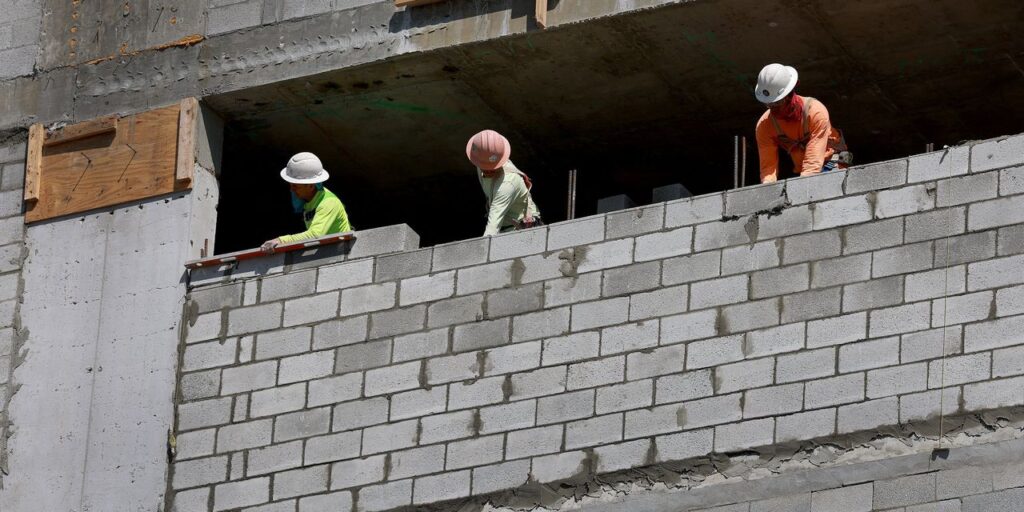The numbers: The U.S. added a muscular 339,000 new jobs in May, underscoring the resilience of the economy in the face of rising borrowing costs.
Employment gains in April and March were also considerably higher than previously reported, the government reported Friday, in another sign the labor market remains unusually strong.
Wall Street had forecast a 190,000 increase in new jobs, based on the government’s survey of business establishments.
The robust demand for labor suggests a widely predicted recession is still far away, but it complicates the Federal Reserve’s efforts to bring high inflation to heel.
The economy has been adding so many jobs it’s created a shortage of workers and is pushing wages higher. Rising pay has added to price pressures and left inflation stuck in the 4% to 5% range — three times higher vs. pre-pandemic levels.
The central bank had been expected to skip an interest-rate hike at its June 13-14 meeting to give it more time to assess the effect of prior increases on the economy. Senior officials are worried they will cause a recession if they act too aggressively.
The unemployment rate, meanwhile, rose to 3.7% from 3.4%, the government said Friday. That’s the highest level since last October.
The jobless rate rose mostly because of a sharp increase in the number of people who said they were unemployed and partly because more people entered the labor force.
Some economists pointed to the rise in unemployment, drawn from a separate household survey, as a potential warning sign.
“Usually, economists put more stock in the establishment survey, because it is based on a larger sample and is less volatile,” Julia Pollack chief economist at ZipRecruiter, said. “But the household survey has been more sensitive to the start of economic downturns.”
Economists also saw the moderation in wage growth as a sign the labor market might not be as strong as it looks. Hourly wages rose 0.3% in May to $33.11.
The increase in wages over the past year slowed to 4.3% from 4.4% and a peak of 5.9% last year.
Wages were rising less than 3% a year before the pandemic, however.
Key details: The increase in hiring was broad-based. Professional businesses (64,000) led the way. Hiring was also strong in government (52,000), health care (52,000) and bars and restaurants (33,000).
Employment even rose by 25,000 in construction, a sector that has struggled to find workers.
The only notable decline in employment was in information services, a category that includes the media and some high tech.
Also read: Global tech layoffs have surpassed 201,000 since the start of 2023
The share of people working or looking for work was flat at a post-pandemic high of 62.6%.
Rising labor-force participation can also help to reduce inflation. When more people look for work, companies don’t have to raise wages as much to obtain labor.
Employment gains in April and March were a combined 93,000 higher than previously reported.
The economy averaged a robust 283,000 new jobs in the past three months, but that’s down from 344,000 in the same period in 2022.
Big picture: The economy has softened a bit and a torrid labor market has partly cooled off since last year. But both might be too strong to ease the upward pressure on inflation.
Workers, for their part, are caught in a vice. Rising wages help them to cope with high inflation, but it also fans the fires of inflation.
The Fed is caught in a vice, too. Even if the central bank skips a rate hike in June, many economists say the Fed may have to raise rates again this year to truly tame inflation.
The higher rates go, though, the greater the odds of a recession. The Fed has jacked up a key short-term rate to a top end of 5.25% from near zero just 15 months ago, marking the highest level in 16 years.
Looking ahead: “The continued strength in employment pushes back the start of a prospective recession but does not eliminate that likelihood,” said chief economist Kathy Bostjancic of Nationwide. “And if the economy remains too hot to meaningfully slow inflation, the Fed will simply raise rates higher, still a path towards a downturn.”
Market reaction: The Dow Jones Industrial Average
DJIA,
and S&P 500
SPX,
were set to open higher before the jobs report. The yield on the 10-year Treasury BX:TMUBMUSD10Y rose slightly to 3.63%.
Read the full article here











